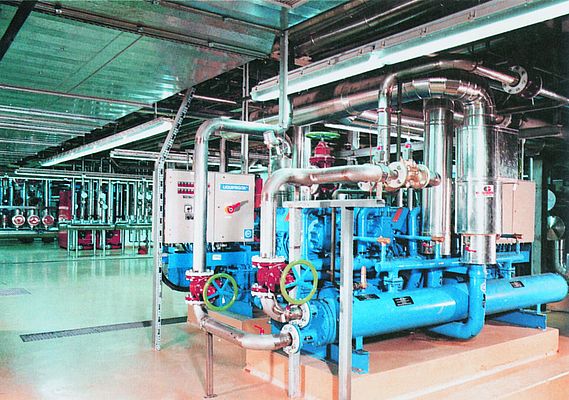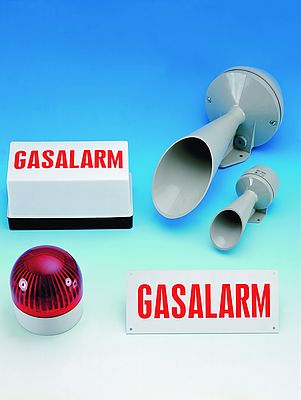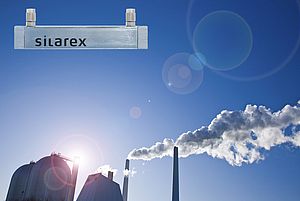The discussion on global warming largely focuses on fossil fuels and the related CO2 production. However, other substances also have a significant effect on global warming. A typical example is the coolants used in refrigeration plants. To prevent their release into the atmosphere calls for an effective and reliable leak detection system. By: Michael Maier, Sales Director, smartGAS GmbH
Refrigeration plants and devices are virtually indispensible today. In addition to the air conditioning systems used in a wide range of buildings, refrigeration systems are also found in applications as diverse as breweries, ice rings and foodstuffs logistics. Up to the start of the 90s, chlorofluorocarbons (CFCs) were commonly used as coolants in such applications. However, due to damage these substances cause to the ozone layer, they have since been banned for use in refrigeration plants, with few exceptions. Even the chlorine-free HFCs commonly used today are not entirely problem-free-for example, the widespread tetrafluoroethane, R134a, has a greenhouse effect, and also contributes to global warming.
Although compared to CO2 emissions, for instance released by burning fossil fuels, the quantities of coolants released into the atmosphere is considerably less, their specific greenhouse effect (effect per unit quantity) is significantly greater. Greenhouse effect is expressed as the so-called GWP (Global Warming Potential), set at 1 for CO2. GWP values for refrigerants currently in common use are approximately 2,000 - 4,000: R134a has a GWP of 1,300. In other words, when 1 kg of this refrigerant escapes into the atmosphere it is the equivalent of 1.3 tonnes CO2. Large refrigeration plants, such as those referred to above, can contain several tonnes of refrigerant, and a corresponding potential danger to the environment.
In recent years, in recognition of the potential environmental risk posed by certain refrigerants, their use is restricted by both European and national legislation (Chemikalien-Ozonschichtverordnung and EU Regulations 2037/2000 and 842/2006). CFCs and partially halogenated CFCs may only be used in exceptional circumstances-for instance when already present in existing plants. Even plants using chlorine-free refrigerants are still subject to strict regulation. Such plants have to be checked for ‘tightness’ by certified personnel. The check interval depends on the amount of refrigerant used. Plants using between 3-30 kg of refrigerant must be checked annually. For plants operating with 30-300 kg, the check interval is 6 months and for plants using more than 300 kg refrigerant this interval is shortened to 3 months. However, the check interval for larger plants can be increased if a detection system capable of detecting a refrigerant leak and setting off the corresponding alarm is installed. The installation of such an alarm system can halve the costs incurred by mandatory inspections, and represents a relatively rapid return on investment.
Hans Maile Gaswarnanlagen GmbH offers such leakage detection systems. This medium-sized company has specialized in gas warning systems for a wide range of sectors and applications, including personnel, property and environmental protection. They specialize in the development and implementation of customer-specific solutions. By using the latest technology, Maile’s commitment to continuous quality improvement offers their customers the very best solutions. The detection systems for refrigerants (e.g. R134a and others) use sensor modules from smartGAS Mikrosensorik based on infrared absorption technology.
Infrared sensors enjoy a number of decisive advantages compared to other measurement and detection processes. These sensors use the property of gases that they absorb infrared light at specific wavelengths. In other words, since wavelength is characteristic for each gas, the sensor is very selective and shows little cross-sensitivity to other gases. IR sensors also tend to suffer much less from ‘ageing’ than conventional electrochemical and catalytic sensors. With this technology it is possible to reliably detect and measure a wide a range of gases-including refrigerants such as R134a.
smartGAS offers IR absorption-based sensors as OEM modules, which consist of a high performance IR radiation source, an interference filter for wavelength selection and a dual detector. The evaluation electronics are accessible via standard interfaces (4...20 mA, 0...2.5 V) and a serial RS485 interface. The entire sensor is hardly larger than a matchbox and can be easily integrated into virtually most applications.
According to Joachim Benz, C.E.O. of Hans Maile Gaswarnanlegen GmbH, IR-based sensors represent a real alternative to the conventional sensors commonly used to today. “The working life of sensors we used in the past is considerably less,” remarked Joachim Benz, highlighting an important disadvantage of the older technologies. “Not infrequently older sensors needed to be exchanged during inspection checks. Also, the reliability of sensors generally used to date is poorer than that of IR sensors. “For example, false alarms can be triggered when solvents are used in the vicinity of sensors,” explained Joachim Benz. “And this can cost money if the service technicians have to be called out to check the system.” The C.E.O.‘s remarks highlight one of the important advantages of the new smartGAS IR sensors. The high selectivity of the detection method virtual excludes the chance of cross-sensitivity to other gases. Although to date, IR gas sensors were relatively more expensive, their high reliability pays for itself very quickly.
Leak detection in refrigeration plants
using IR absorption-based sensors
- by smartGAS Mikrosensorik GmbH
- June 17, 2010
- 1449 views





















